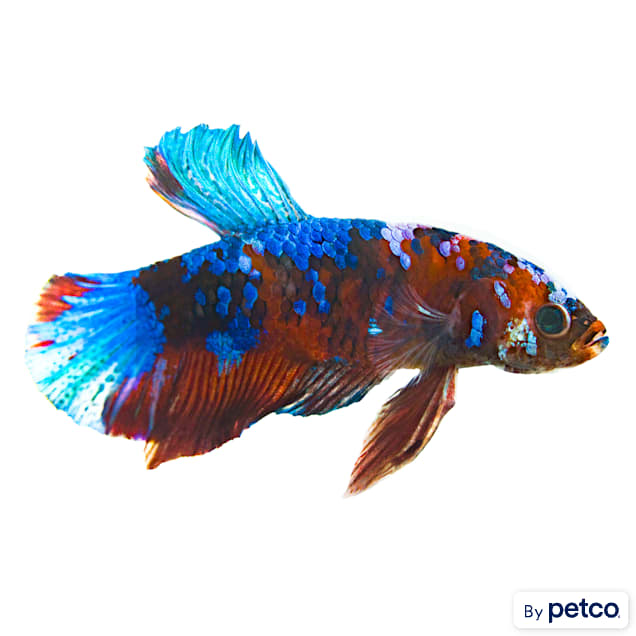Betta Fish Life Expectancy: How to Guarantee Your Betta Lives Longer
Betta Fish Life Expectancy: How to Guarantee Your Betta Lives Longer
Blog Article
How to Breed Betta Fish Efficiently: Specialist Methods and Insights for Hobbyists Wanting To Expand Their Betta Collection
Breeding Betta fish calls for a nuanced understanding of genes and ecological conditions, making it important for enthusiasts to approach the procedure with both diligence and care. Developing an optimal breeding environment, picking the best pairs, and observing the details of their courtship behaviors are foundational steps that can significantly affect the outcome.
Comprehending Betta Fish Genetics
Comprehending the genes of Betta fish is critical for effective breeding, as it influences traits such as color, fin form, and behavior. Betta fish display a diverse range of colors and patterns, greatly established by their genetic makeup. The key genetics in charge of coloration consist of the "B" gene for blue, "D" gene for red, and the "C" genetics for shade intensity. Breeders can control these attributes by choosing details parent fish that display desired features.
Along with coloration, fin morphology is one more substantial facet of Betta genes (betta fish). The sizes and shape of fins are influenced by numerous genetics, including those that determine whether the fins are short, long, or veil-shaped. Comprehending these genetic variations aids breeders anticipate the phenotypic results of their offspring
Additionally, behavior characteristics such as aggression and territoriality can also be affected by genes. These actions play a vital role in the breeding process, as they can influence spawning success and the general temperament of the resulting fry. By thoroughly recognizing these genetic concepts, dog breeders can make educated decisions, eventually improving their reproduction programs and accomplishing desirable outcomes.
Preparing the Breeding Setting
Developing an optimal breeding atmosphere is essential for the successful reproduction of Betta fish. The very first action in preparing this setting is to select a suitable breeding storage tank, preferably varying from 5 to 10 gallons.
Following, consider the use of a sponge filter or an air stone to supply mild water circulation without creating strong currents that can stress the fish. It is vital to mount plants or reproducing cones to supply concealing places and advertise convenience for the lady throughout the spawning procedure. Drifting plants, such as Java moss or water sprite, can additionally develop an extra all-natural setting while facilitating bubble nest building by the male.
Prior to introducing the reproducing sets, make certain the water is conditioned and without hazardous chemicals, such as chlorine or heavy metals. betta fish. Normal water adjustments need to be performed to keep optimum water top quality, improving the possibilities of successful breeding. With these prep work in position, the reproducing atmosphere will support the health and health of both Betta fish
Choosing Breeding Pairs
Picking the best reproduction pairs is crucial for accomplishing successful Betta fish reproduction. Healthy Betta fish show dynamic shades, clear eyes, and active habits.
Personality is an additional important consideration, as Betta fish are understood for their hostile nature. It is advisable to select a man and lady that show suitable temperaments to reduce anxiety throughout the breeding procedure. A tranquil male can urge a smoother courtship, while a lady that is also hostile might disrupt the procedure.
Hereditary history additionally plays a substantial function in the high quality of the children. Breeding fish that are genetically varied can reduce the danger of hereditary health and wellness problems and enhance the total vitality of the fry. It is useful to look into the lineage of both the male and woman, concentrating on desirable traits such as fin type, color scheme, and size.
The Breeding Process
The reproduction procedure of Betta fish calls for careful preparation and interest to detail to make certain an effective result. At first, it is vital to prepare a suitable breeding tank, preferably a 5-10 gallon fish tank with a temperature maintained at 78-80 ° F. The tank needs to be furnished with a heating system, filter the original source (ideally sponge type to avoid strong currents), and a lot of marine plants for the lady to conceal.
Once the setting is set, introduce the chosen reproducing pair to the container, enabling them to accommodate. Observe their habits; the male will show sophisticated courtship routines, consisting of flaring his fins and building a bubble nest. If the female reveals rate of interest, she will certainly display vertical stripes suggesting preparedness for spawning.
When the lady is receptive, the pair will involve in a mating embrace, throughout which the male fertilizes the eggs. Keeping ideal water conditions during this duration is essential for the advancement of healthy and balanced Betta fry.
Taking Care Of Betta Fry

Feeding Betta fry is critical, as they call for a diet regimen high in protein. They can be fed infusoria or fluid fry food, transitioning to finely crushed high-grade pellets as they grow. Feed tiny sections multiple times a day to motivate healthy and balanced growth without straining the storage tank with uneaten food.

As they mature, monitor their development carefully and separate any type of hostile individuals to avoid damage. By offering a supporting atmosphere and appropriate nourishment, enthusiasts can efficiently raise Betta fry right into vibrant, healthy and balanced fish, inevitably enhancing their breeding endeavors.
Verdict
Effective Betta fish reproduction calls for meticulous attention to genetic choice, ecological problems, and look after the fry. By comprehending the genes of Betta fish and preparing an appropriate breeding environment, hobbyists can enhance the possibilities of generating dynamic, healthy and balanced children. Selecting suitable reproduction sets and very closely keeping track of the courtship and spawning procedures are crucial. Giving optimum treatment for the fry ensures their healthy visit homepage development, contributing to a thriving Betta collection.
Report this page